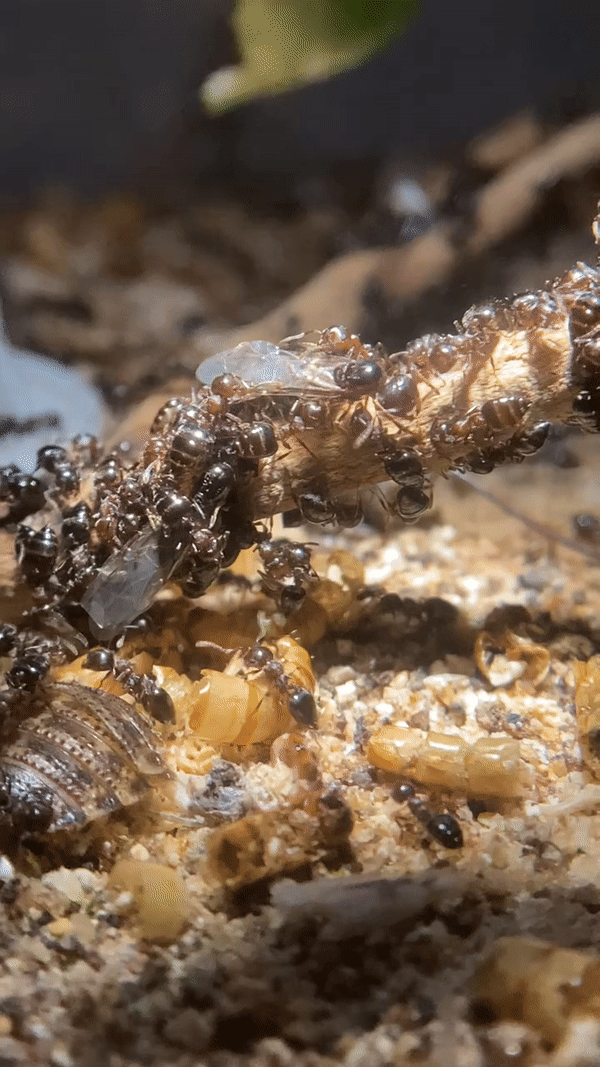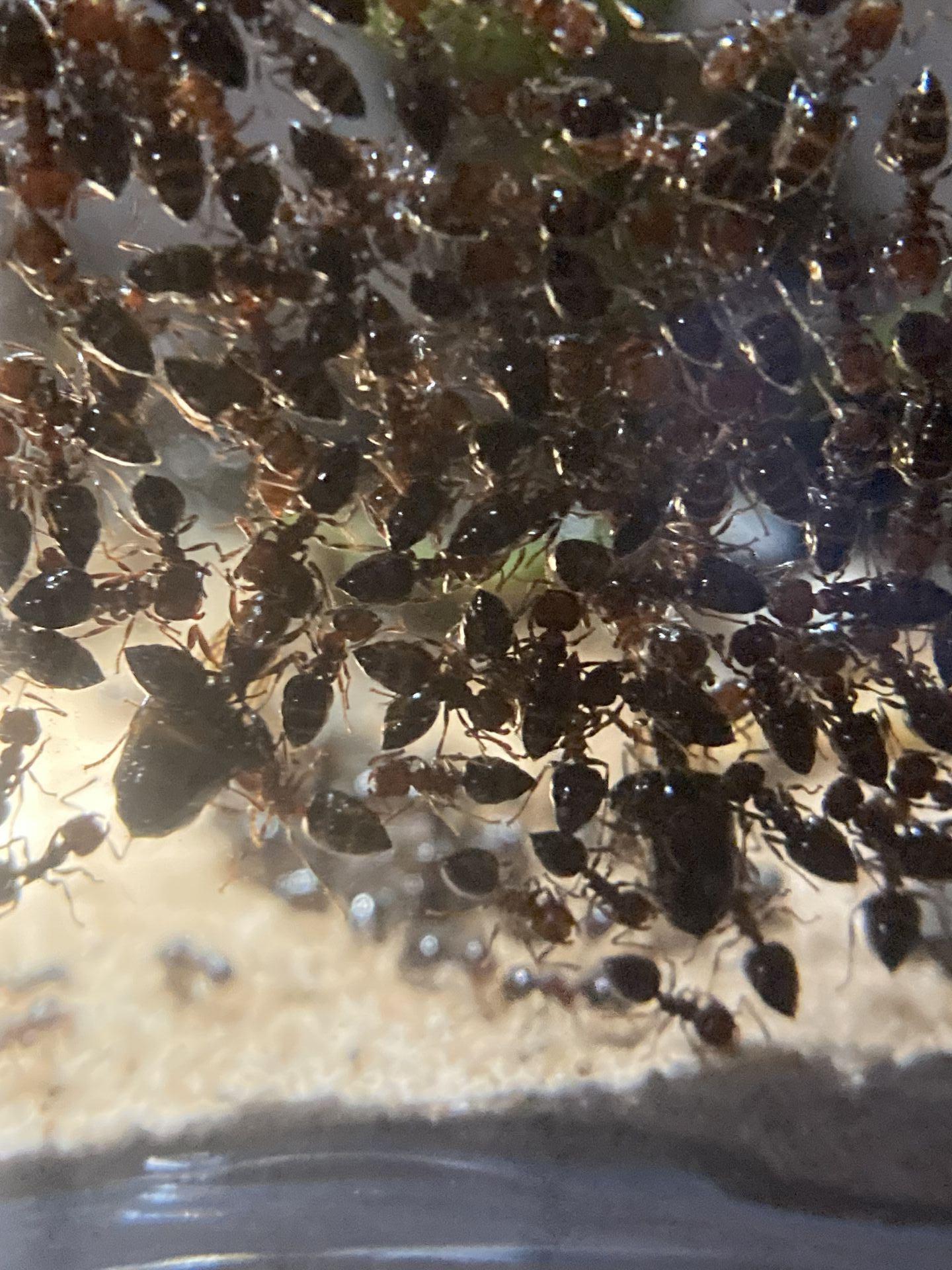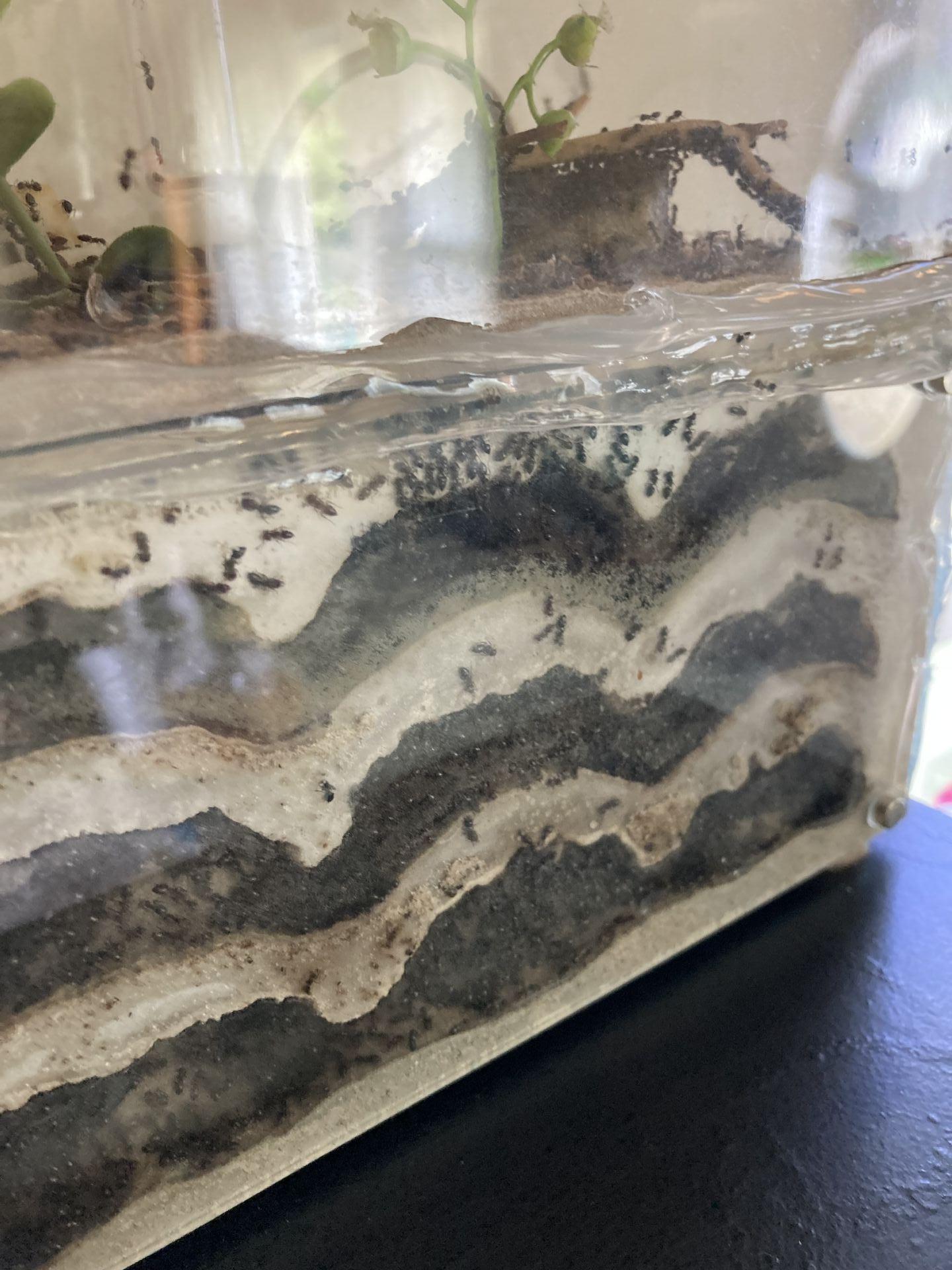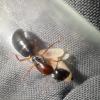Wow I can't wait until Crematogaster starts flying! That will be awesome!
- Formiculture.com
- Forums
- Gallery
- Members
- Member Map
- Chat

Wow I can't wait until Crematogaster starts flying! That will be awesome!
My YouTube Channel.
My Ant Store: https://www.missouriantshop.com/
I know my Nylanderia vividula colony plateaued after getting their first queen alates, so maybe they have simply reached max size?
Hi there! I went on a 6 month or so hiatus, in part due, and in part cause of the death of my colonies.
However, I went back to the Sierras, and restarted my collection, which is now as follows:
Aphaenogaster uinta, Camponotus vicinus, Camponotus modoc, Formica cf. aserva, Formica cf. micropthalma, Formica cf. manni, Formica subpolita, Formica cf. subaenescens, Lasius americanus, Manica invidia, Pogonomyrmex salinus, Pogonomyrmex sp. 1, Solenopsis validiuscula, & Solenopsis sp. 3 (new Sierra variant).
My Nylanderia also have totally plateaued. I guess it’s just part of the life cycle.I know my Nylanderia vividula colony plateaued after getting their first queen alates, so maybe they have simply reached max size?
Yeah, I could have put them in a formicarium half the size of the one they are in. ![]()
Hi there! I went on a 6 month or so hiatus, in part due, and in part cause of the death of my colonies.
However, I went back to the Sierras, and restarted my collection, which is now as follows:
Aphaenogaster uinta, Camponotus vicinus, Camponotus modoc, Formica cf. aserva, Formica cf. micropthalma, Formica cf. manni, Formica subpolita, Formica cf. subaenescens, Lasius americanus, Manica invidia, Pogonomyrmex salinus, Pogonomyrmex sp. 1, Solenopsis validiuscula, & Solenopsis sp. 3 (new Sierra variant).
I think it could be one of a few things. In some of my Crematogaster colonies, they decide to take a mid-season hibernation. This also sometimes happens with my Camponotus and Formica. I don't know why that would happen, though, because you gave them a very good hibernation, so this mini-hibernation in the middle of July would be silly.
I suppose it's worth mentioning I do kind of have a feeling that (up here in cold Wisconsin) after they get alates, they stop brood production for the year. I've noticed this as the case when I find wild colonies of Crematogaster with alates in August. Crematogaster don't seem to need a LOT of workers to defend themselves, as they are pretty good fighters, so perhaps workers are only produced prior to the flight season for each year, just enough to find food/defend for alates (I could be totally wrong). I do think they have a strict sort of life cycle centering around certain milestones such as hibernation and alate production. The fact that your queen has laid eggs is a good sign, though, that this theory is probably not correct, at least in your case.
Perhaps they just need a bit more food, or food variety.
I don't think this is a natural plateau for them, though, how many workers do you think the colony is now at? That you mentioned the queen has laid a few large egg batches makes it seem like they had just paused for the alate production, and hopefully will soon return producing more workers to give you an even bigger headache ![]()
I love this journal, keep up the great work with these ants!
Ant Keeping & Ethology Discord - 2000+ Members and growing
Statesideants.com - order live ants legally in the US
Edited by ANTdrew, July 27 2021 - 2:51 AM.
Alates definitely throw off worker numbers in colonies. My Pheidole pilifera, after producing alates, crashed from several hundred workers and hundreds of alates to only ~100-200 workers. They are now recovering. Alates take up a lot of resources without providing anything to the colony, so it can cause a decrease in worker numbers or brood production. If your queen has resumed laying, I wouldn't personally worry.
I like leafcutter ants. Watch The Ultimate Guide to Fungus Growing Ants:
https://youtu.be/VBH...4GkxujxMETFPt8U
This video took like over 100 hours of work, you should for sure watch it.
That makes good sense.I am new so I'm just sharing thoughts, but to me I assumed they would have to take a break when they made alates.
When I hunt ants and brood and find alate brood I never really see any other brood with them. It's either reg or alates in the wild colonies that I've explored.
I kinda took this to me that they can really only focus on the one stage at a time. I imagine it's like those games where you save up resources to build... they saved up resources and spent them all on alates.
I am new so I'm just sharing thoughts, but to me I assumed they would have to take a break when they made alates.
When I hunt ants and brood and find alate brood I never really see any other brood with them. It's either reg or alates in the wild colonies that I've explored.
I kinda took this to me that they can really only focus on the one stage at a time. I imagine it's like those games where you save up resources to build... they saved up resources and spent them all on alates.
I actually noticed this with Lasius colonies back in Michigan. They always had one or the other like you have described.
Update 8-19-21
This colony continues to trouble me. They still have a pile of eggs, but they won't hatch, and it seems like the pile has decreased. I can only think that they are feeding new eggs to the queen alates to strengthen them?? This whole experience has really illustrated how much of a drain it is on a colony to produce alates.



Check out my new YouTube Video!
Ant Keeping →
Ant Keeping Journals →
cooIboyJ's Nylanderia vividula journalStarted by cooIboyJ , Sep 6 2025 |
|

|
||
Ant Keeping →
Ant Keeping Journals →
Ants_Dakota's Camponotus sp. JournalStarted by Ants_Dakota , Jul 13 2025 |
|

|
||
Ant Keeping →
Ant Keeping Journals →
Strickys Formica JournalStarted by stricky_ants , Jun 21 2025 |
|

|
||
Ant Keeping →
Ant Keeping Journals →
AntTx's Camponotus sansabeanus JournalStarted by AntsTx , Jun 17 2025 |
|

|
||
Ant Keeping →
Ant Keeping Journals →
The Bark Battalion (Liometopum occidentale)Started by AntsGodzilla , Jun 3 2025 |
|

|
0 members, 0 guests, 0 anonymous users